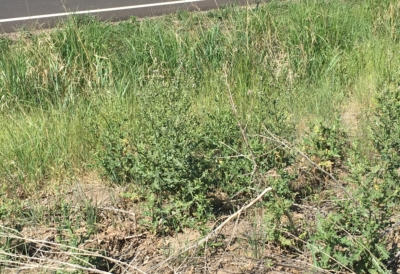Canada Thistle Control Options:
Researchers at Colorado State University recommend the following chemicals for effective chemical control of Canada thistles in rangeland, natural areas, pastures and non-crop areas:
• Tordon 22K (picloram)
• Milestome (aminopyralid)
• Transline(clopyralid)
• Perspective (aminocyclopyrachlor + Chlorsulfuron)
• Banvel/Vanquish/Clarity (dicamba) and
• Telar (chlorsulfuron)
Chemical control of Canada Thistles may be very demanding and you may need to repeat the treatment for additional two or three years after your first application. However, these chemicals have better results when integrated with mechanical and/or cultural control of Canada thistle. The Colorado State University research also shows that Clarity/Vanquish/Banvel/ or Telar produces better results when used together with 2, 4-D. Use 2, 4-D, 2 quarts for each acre during spring when the thistles are between 10 to 15 inches in height. Re-apply treatment with Vanquish/Clarity/Banvel; 2 quarts per acre or Telar; 1 ounce per acre to regrowth. Use surfactant combined with Telar for optimal control.
The combination of clopyralid and 2, 4-D (known as curtail) is a very effective control for the Canada Thistles, though not as effective as Transline. The research reveals that this combination will be more effective when followed by two or three mowing. If there is an infestation in places where there is need for restriction of the growth of the root like with high water tables, commence mowing when it reaches height of 12 to 15 inches. The mowing should be repeated once in a month. Curtail application should be at 2 to 3 quarts per acre in October or around a month after the third mowing. Continue with this application for two years non-stop .
If you have Canada thistle infestation or any other noxious weed, contact SprayTech for a free estimate on chemical control of Canada thistle.


